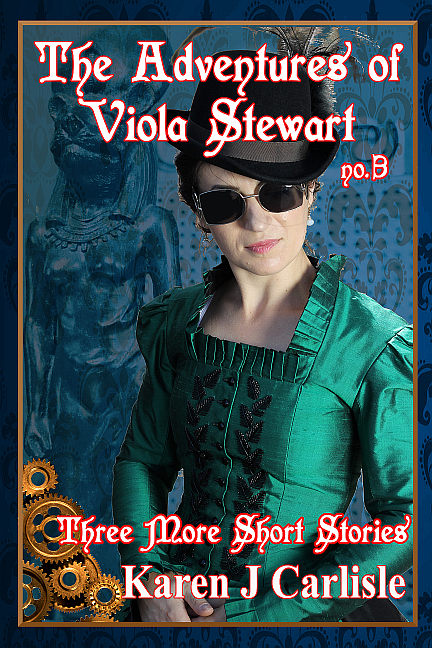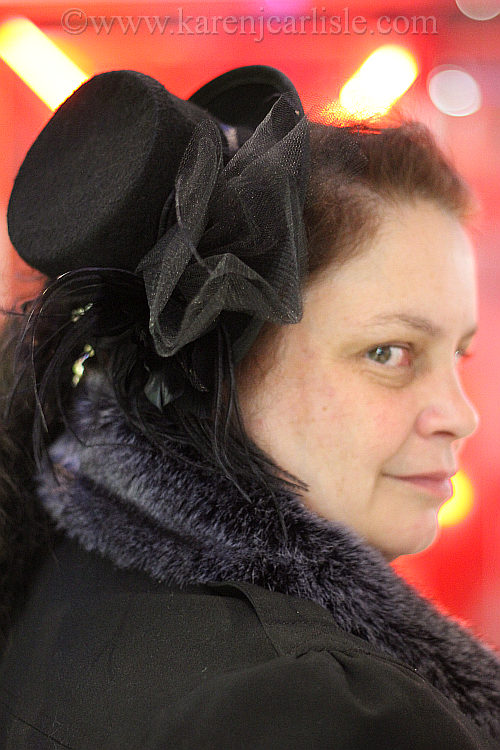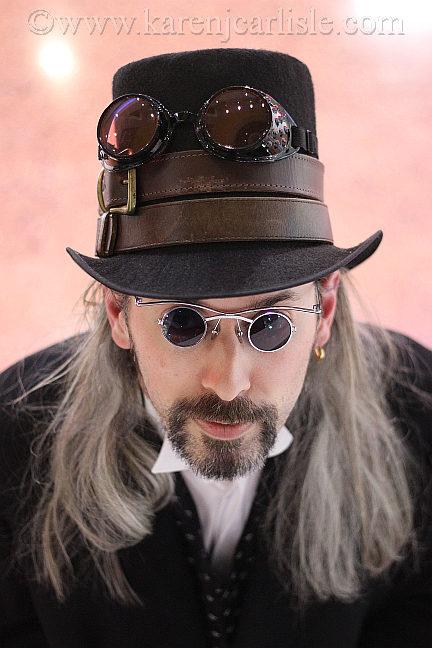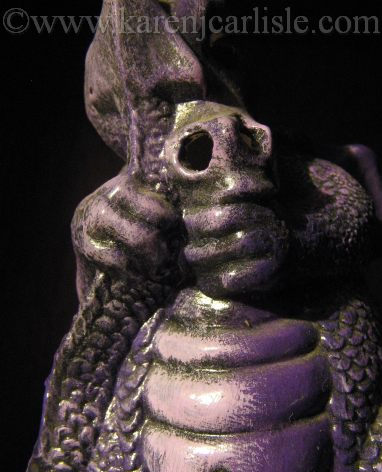oringal post: http://karenjcarlisle.com/2016/06/10/friday-flash-fiction-challenge-at-suns-end/
This week's Chuck Wendig challenge was simple: Must contain map. (with extra-awesomeness for making a map) Less than 1000 words. Challenge accepted.
AT SUN’S END
(MUST CONTAIN MAP CHALLENGE)
© 2016 Karen Carlisle
Go east, it said. Follow the sun.
Dorcas peered over the bow. Salt spray ricocheted off the cabin’s glass. Waves slapped at the hull. The sun was nudging the horizon. Soon there would be nothing to follow.
“Get me that map, Squib,” she grumbled as she locked the ship’s wheel in position and pulled the chain dangling by her ear.
With a hiss and a puff of steam, a telescope detached from the cabin roof. Flecks of rust dusted her shoulder as it ratcheted lower, wobbled and suspended itself mid-air in front of her eye.
She peered through the eyepiece, grimaced and cranked a dial on the scope, focussing on the white caps of the tortured waves. Still nothing but sea.
“Capt’n, we’ve lost another one.” Squib glared at her from under crumpled eyebrows and thrust a rolled parchment in her direction.
“How many now?” asked Dorcas.
“Two, if you don’t count the cat,” replied Squib.
Dorcas bit her lip. They had come too far to turn back now. A pact had been made and restitution must be made. It would earn her two thousand guineas.
“I told them to stay below decks and out of the hold,” she said as she snatched the scroll and flipped open the parchment. She studied the map. Fading ink lines traced out the shape of a crescent island. To the south lay treacherous waters – rips and whirlpools enhanced by shadowy haloes of ancient ink.
Squib examined the array of instruments on the navigation panel and leaned over Dorcas’s shoulder.
“We should be…” His finger hovered over a serpentine figure on the map. “… Here.” He sucked in his breath and recoiled his finger.
Faint lettering rode the serpent’s back: Here be monsters.
Dorcas clenched her teeth, disengaged one of the brass levers beside the wheel and yanked it toward her. It thudded on the wooden frame. Its twin shuddered.
The engines below wailed. Gears screamed. The floor beneath their feet reverberated. Outside the wind silenced. The sea calmed. Grey smoke belched from the funnel and clung to the deck, like a shroud.
Squib lunged toward the levers. “Are you mad, Capt’n? We can’t stop here.”
“Do not touch those controls, Squib.” Dorcas stepped in front of her first mate and held her ground. “That’s an order.” She flicked a switch. A regular clang resounded along the deck. The signal was sent.
The engine sputtered to a halt.
Squib stared at her, eyes wide.
“But Capt’n…” He swallowed. “Here be…”
"Monsters.” Dorcas licked her lips. “Yes, I know.” She peered over the bow. Ripples surged across the sea surface.
Squib’s jaw dropped. His mouth twitched. No words came.
Dorcas glared at him through slitted eyelids.
“Prepare to jettison the cargo, Squib.” She eyed the unsettled water. Bubbles beaded on the surface. She grasped the wheel tight in both hands. “Now, Squib!”
Squib lifted the brass communication tube to his lips and blew.
“Prepare to jettison the cargo pod.”
A muffled voice replied.
Squib turned to Dorcas. “What is in the cargo pod, Capt’n?”
Almost there. Dorcas’s heart pounded. Her breaths deepened. She remained silent and scanned the water, looking for any signs of…
“Are they ready?” asked Dorcas, her voice calm as the grave.
Squib barked orders down the tube. More muffled replies. He nodded, not taking his eyes off the water.
The surface convulsed.
“There!” Dorcas yanked back the second lever. The engines roared back into life. The ship inched away from the growing whirlpool.
Beads of sweat formed on Squib’s forehead.
A glistening tentacle, as thick as a horse, broke the surface and slid elegantly skyward. It curled toward the ship, raining water across the bow.
“Captain?” Squib’s knuckles paled as he squeezed the communication tube.
Dorcas’s breaths came more quickly now, matching her heartbeat.
A second tentacle slipped out of the water.
“Now, Squib!” Dorcas hissed.
Squib screamed down the tube.
Chains rattled below. The hull moaned. The ship lurched backward. The water seemed to boil around them. The tentacles halted, suspended above the cabin.
Dorcas swallowed. She had delivered on her part of the bargain. She held her breath. But could the deal be trusted?
An unearthly howl shook the ship. The tentacles quivered, and slowly pulled back as if revoking their claim. They hovered for a moment before sinking back into the depths.
Dorcas let out a ragged breath and grinned.
Squib slumped against the instrument panel, communication tube still in hand.
“What the --?”
“We’ve completed the bargain,” replied Dorcas as she unlocked the ship’s wheel and spun it northward. “Tell the men we’re heading home.”
Squib straightened his shoulders and looked Dorcas in the eye.
“Captain, what was in the cargo pod?” he asked.
Dorcas glanced sideways at him.
“A mother and child should never be parted, Squib,” she replied. Next time she would accept no less than five thousand.
THE END
And yes, I made a map.
Artwork (c) 2016 Karen Carlisle
All rights reserved.
























